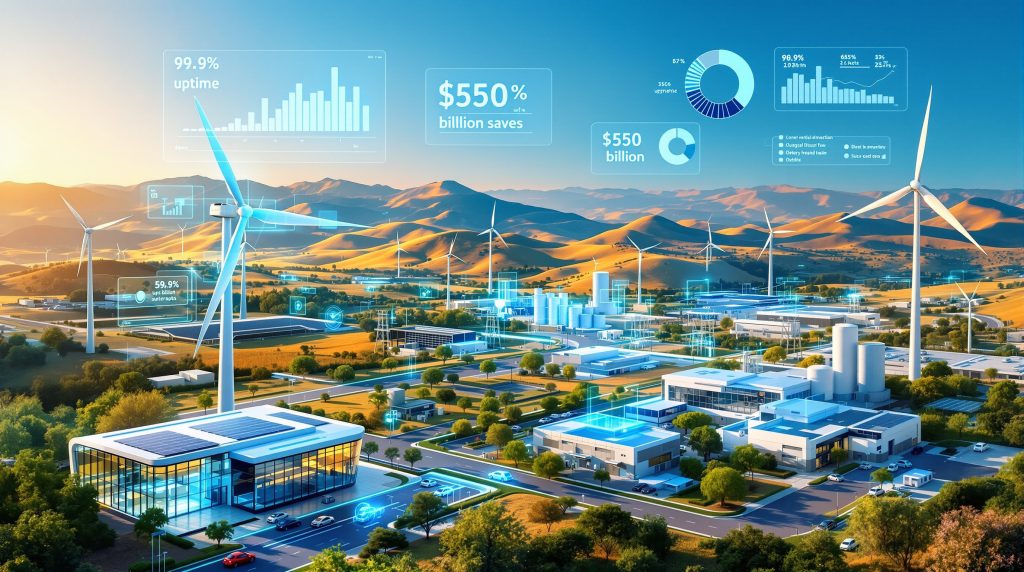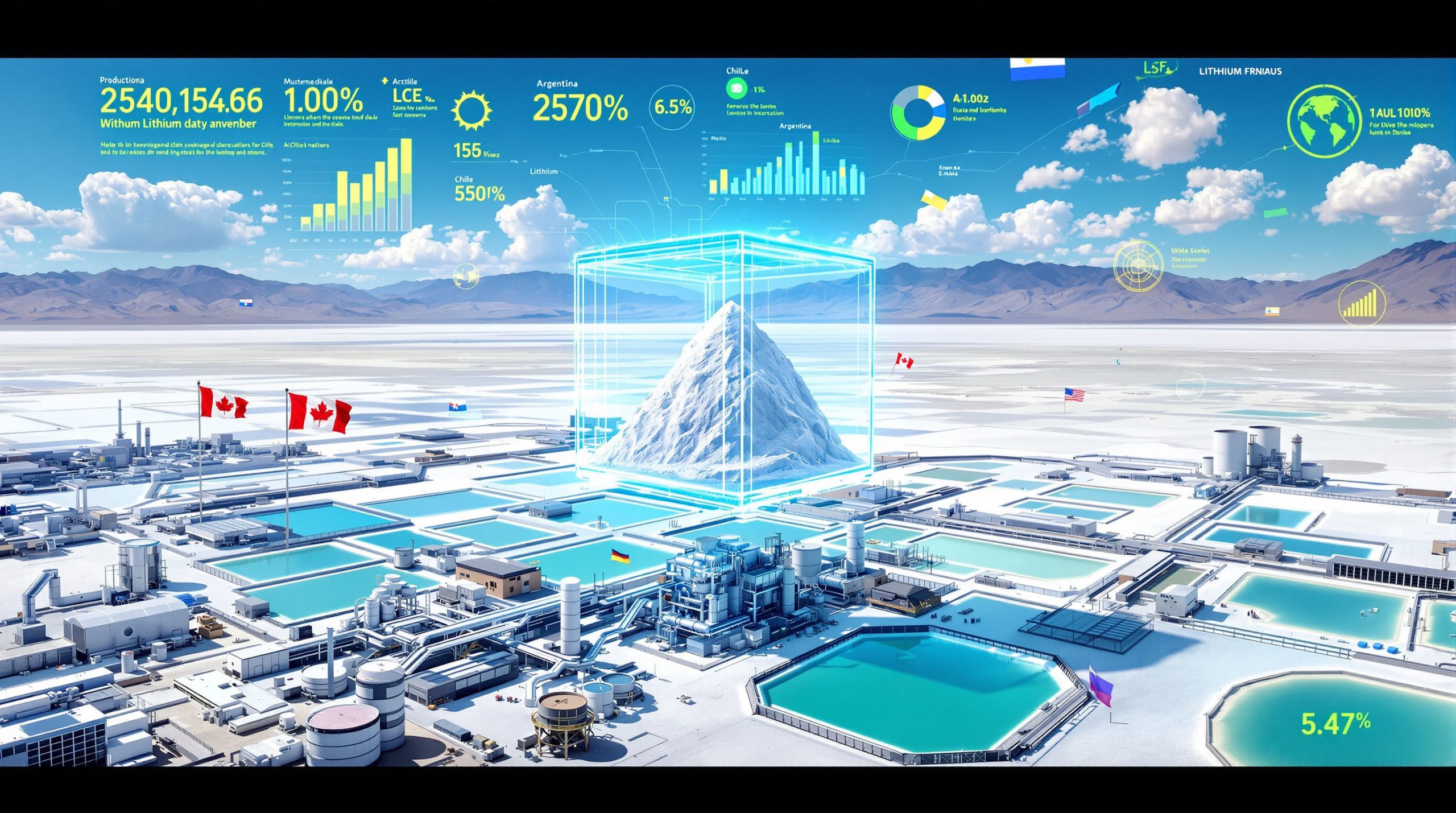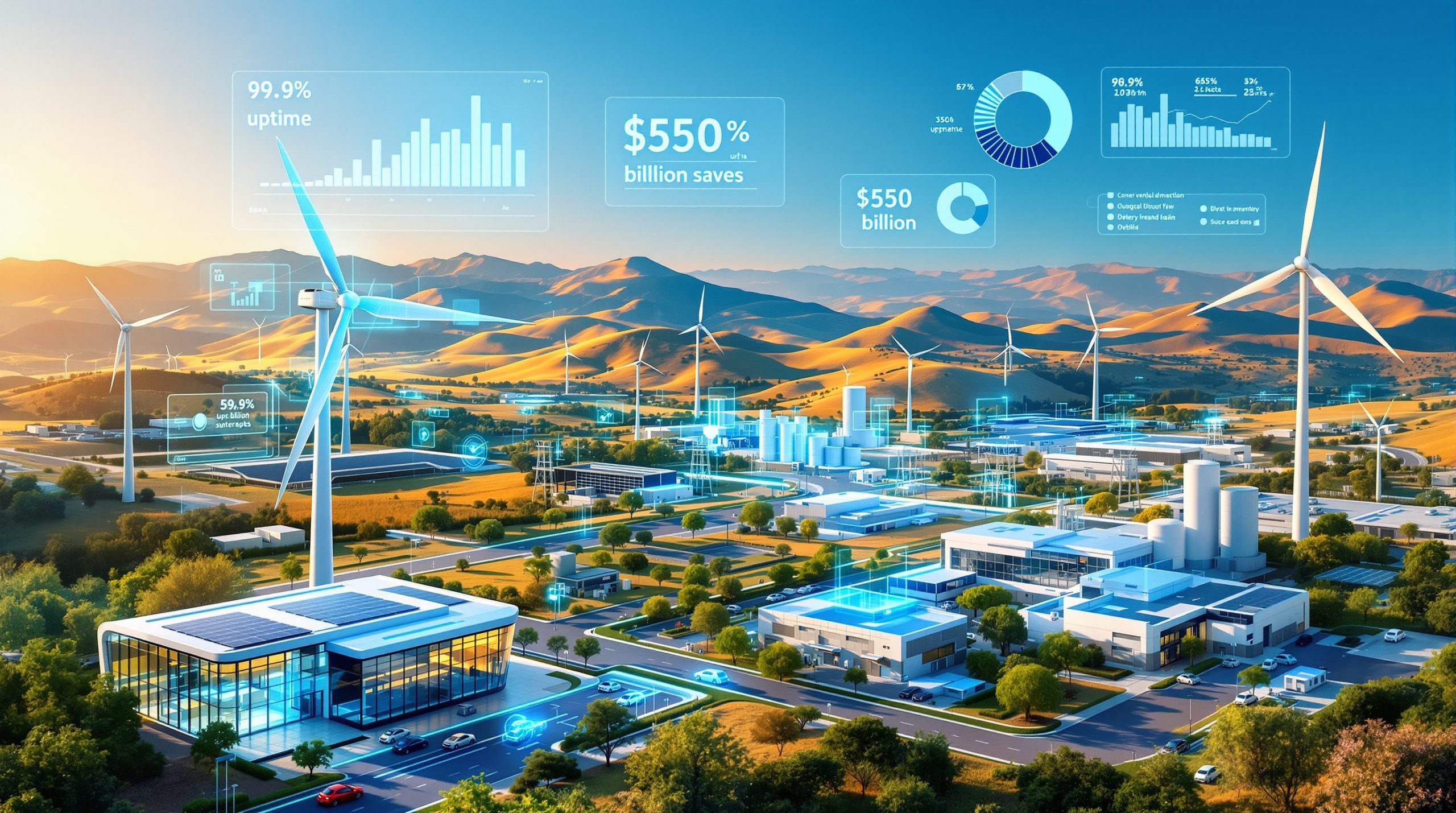Understanding the Microgrid Revolution in Global Energy Systems
Distributed energy networks represent a fundamental shift away from traditional centralized power infrastructure models. Why microgrids are the backbone of the next energy revolution becomes clear when examining these autonomous systems that combine multiple energy sources within specific geographical boundaries, creating self-sufficient power ecosystems capable of operating independently or alongside conventional electrical grids.
Next-Generation Energy Architecture
Modern microgrids function as interconnected distributed energy resource networks operating under unified control systems. These installations seamlessly transition between grid-connected and islanded operation modes while integrating renewable generation, advanced storage technologies, and intelligent load management capabilities.
The architecture enables real-time coordination between solar panels, wind turbines, battery systems, and backup generators through sophisticated control algorithms. This integration creates resilient power networks that adapt to changing conditions while maintaining continuous electricity supply.
Scale Variations and Implementation Approaches
Microgrid deployments span multiple scales and applications:
- Campus-level implementations serving universities and industrial complexes
- Community-scale networks powering entire neighbourhoods and districts
- Critical infrastructure solutions for hospitals and emergency services
- Remote area installations connecting previously unserved populations
Economic and Technical Drivers Behind Global Microgrid Adoption
The worldwide energy landscape confronts unprecedented challenges requiring innovative infrastructure solutions. Traditional grid vulnerabilities, climate change impacts, and escalating electricity demand create compelling justification for decentralised energy approaches that support energy transition and security.
Enhanced System Resilience
Centralised grid failures impose substantial economic costs across developed economies. Traditional infrastructure experiences significant service interruptions during extreme weather events, creating cascading impacts across commercial and residential sectors.
Key Performance Metrics:
- Critical facilities with microgrid backup systems demonstrate superior operational continuity
- Remote installations maintain service during natural disasters when main grids fail
- Healthcare and emergency services avoid costly downtime through distributed generation
Economic Benefits Over Traditional Infrastructure
Localised energy networks deliver measurable cost advantages through reduced transmission losses and optimised energy management. Traditional grid systems typically experience 8-15% energy losses during long-distance transmission, while microgrids maintain losses below 3% through proximity generation.
Peak demand charge avoidance through intelligent load scheduling creates additional savings. Advanced control systems automatically shift non-critical loads to off-peak periods, reducing utility demand charges that can represent 30-50% of commercial electricity costs.
Revenue generation opportunities emerge through grid services and energy trading programs. Microgrids can sell excess generation back to utilities while providing ancillary services like frequency regulation and voltage support, demonstrating clear decarbonisation benefits.
Renewable Energy Integration Through Smart Microgrids
Distributed generation networks excel at incorporating variable renewable sources while maintaining grid stability. Advanced control systems balance intermittent solar and wind output with storage technologies and backup generation through predictive algorithms.
Intelligent Energy Management Systems
Modern microgrid control systems employ sophisticated forecasting and optimisation technologies. Weather data integration enables accurate renewable energy production predictions, allowing systems to pre-position storage resources for optimal performance through data-driven operations.
Core Management Functions:
- Renewable energy production forecasting based on weather patterns
- Battery charging and discharging optimisation for maximum efficiency
- Multi-source coordination ensuring seamless power delivery
- Demand response integration reducing peak load requirements
Advanced Storage Technology Integration
Battery storage systems serve as the critical enabler for renewable energy integration within microgrids. Different storage technologies offer varying performance characteristics suited to specific applications and requirements, particularly as advances in battery recycling breakthrough technologies continue to evolve.
Energy Storage Performance Comparison:
| Technology Type | Round-Trip Efficiency | Cycle Life | Application Focus |
|---|---|---|---|
| Lithium-ion | 85-95% | 6,000-10,000 | Fast response, high efficiency |
| Flow Batteries | 75-85% | 15,000+ | Long-duration storage |
| Compressed Air | 70-80% | 20,000+ | Large-scale applications |
International Development Programs Accelerating Microgrid Deployment
Global development organisations and governments increasingly recognise why microgrids are the backbone of the next energy revolution for achieving universal energy access and climate objectives. Furthermore, major international initiatives demonstrate the technology's potential for transforming energy systems in developing regions.
Yemen HEAL Project Implementation
The United Nations Development Programme has implemented the Renewable Energy to Improve Access to Health Services and Livelihood Opportunities project across five governorates in Yemen. This initiative, funded by the Kuwait Fund for Arab Economic Development, targets economic empowerment through sustainable energy access.
Project Impact Metrics:
- 205,000 individuals expected to benefit from solar microgrid installations
- Focus on low-income youth and marginalised communities
- Replacement of diesel generators with clean energy systems
- Economic opportunities created through reliable electricity access
The project addresses chronic energy shortages that have plagued Yemen, where frequent blackouts forced communities to rely on expensive and polluting diesel generators. Subsequently, solar microgrids provide cost-effective alternatives while supporting local economic development.
Democratic Republic of Congo Expansion Initiative
Africa's largest mini-grid development project targets massive expansion of electricity access in the Democratic Republic of Congo. The Multilateral Investment Guarantee Agency provided a $50.3 million guarantee to Congo Energy Solutions Limited, supporting ambitious deployment goals.
Project Scope and Timeline:
- Target population: 5 million people by 2025
- Partnership between MIGA, International Finance Corporation, and International Development Association
- Private sector collaboration model demonstrating scalability
- Hydropower-based microgrids addressing population growth challenges
The DRC project addresses a critical infrastructure gap where only 1.6 million of 10 million households had electricity access in 2020. Despite abundant hydropower resources, traditional grid expansion has not kept pace with population growth, making distributed generation essential for universal access goals.
U.S. Utility Microgrid Strategies for Wildfire Risk Mitigation
American utilities increasingly deploy localised energy networks addressing specific regional challenges, particularly wildfire prevention and grid modernisation requirements. This trend aligns with broader strategies outlined in the US executive order on security. Pacific Gas & Electric Company exemplifies this strategic shift following devastating wildfire incidents.
Pacific Gas & Electric Implementation Program
PG&E's microgrid deployment strategy emerged from regulatory requirements following the utility's 2019 bankruptcy after transmission lines were linked to California's deadliest wildfire. The company now operates 12 remote grid systems in Sierra Nevada high country with expansion plans targeting over 30 installations by late 2027.
Implementation Framework:
- Regulatory approval obtained in 2023 for expanded remote grid development
- Cost-benefit analysis comparing microgrid installation to traditional infrastructure
- Focus on wildfire-prone regions where conventional lines pose highest risk
- Integration of solar panels, battery storage, and backup generators
Economic Justification Methodology
PG&E's microgrid deployment follows strict economic criteria where installation and operational costs must remain below conventional power line expenses. This cost-effectiveness requirement ensures sustainable expansion while meeting regulatory mandates for wildfire prevention.
California utilities have invested billions in traditional wildfire prevention measures including underground line burial, vegetation management, and overhead line protection. However, these investments have forced utilities to increase consumer costs, driving exploration of alternative solutions like microgrids.
Microgrids offer utilities a proactive wildfire prevention solution that enhances both safety and reliability while potentially reducing long-term infrastructure maintenance costs compared to traditional hardening approaches.
Artificial Intelligence Applications in Microgrid Optimisation
Advanced computing technologies transform microgrid operations through predictive analytics, automated control systems, and real-time optimisation algorithms. For instance, machine learning applications enable unprecedented efficiency improvements in distributed energy management.
AI-Powered Energy Balance Management
Artificial intelligence systems analyse current and projected energy production alongside demand patterns to optimise energy flows throughout microgrid networks. Consequently, these systems reduce waste while ensuring stable energy supply through intelligent resource coordination.
Core AI Applications:
- Demand Forecasting: Historical consumption analysis predicts future energy requirements
- Generation Optimisation: Weather integration maximises renewable output potential
- Storage Management: Battery lifecycle optimisation through intelligent charging protocols
- Grid Interaction: Automated energy trading decisions based on market conditions
Performance Enhancement Through Smart Controls
AI-enabled control systems deliver measurable improvements in microgrid efficiency and reliability. Moreover, machine learning algorithms continuously adapt to changing conditions while optimising multiple operational parameters simultaneously.
Operational Improvements:
- Energy waste reduction through optimised dispatch scheduling
- Renewable energy utilisation improvements via predictive management
- Operational cost decreases through predictive maintenance protocols
- Accelerated response times to grid disturbances and fluctuations
Implementation Challenges Facing Microgrid Development
Despite significant operational advantages, distributed energy networks encounter technical, regulatory, and financial obstacles requiring strategic solutions. Understanding these challenges proves essential for successful microgrid deployment and long-term viability, as detailed in energy industry reports.
Capital Investment and Financing Considerations
Microgrid development requires substantial upfront investment across multiple system components. Cost considerations span generation equipment, energy storage, control systems, and installation requirements.
Investment Component Analysis:
| System Component | Cost Share | Key Considerations |
|---|---|---|
| Generation Equipment | 35-45% | Solar, wind, backup generators |
| Energy Storage | 25-35% | Battery systems, power electronics |
| Control Systems | 15-25% | Automation, monitoring, communication |
| Installation/Integration | 10-20% | Engineering, commissioning, permits |
Financing barriers include limited access to capital for smaller projects, complex project structures requiring specialised expertise, and regulatory uncertainty affecting investment returns. Additionally, traditional utility financing models may not align with distributed generation ownership structures.
Regulatory and Interconnection Complexities
Microgrid development faces varying regulatory frameworks across jurisdictions, creating compliance challenges for developers. Grid interconnection standards differ by region, requiring specialised technical expertise for successful project execution.
Regulatory Challenges:
- Permitting processes requiring coordination across multiple agencies
- Market participation rules limiting revenue generation opportunities
- Utility rate structures not optimised for distributed generation
- Safety and reliability standards varying by jurisdiction
Energy Security and Independence Through Distributed Systems
Decentralised power systems fundamentally enhance energy security while reducing vulnerability to large-scale disruptions. In addition, microgrids enable local energy self-sufficiency and support community economic development through reliable electricity access.
Critical Infrastructure Protection Benefits
Microgrids provide essential backup power for critical facilities during grid outages and natural disasters. Hospitals, emergency services, and data centres rely on continuous power supply for life safety and operational continuity.
Infrastructure Resilience Applications:
- Hospital systems maintaining operations during natural disasters and emergencies
- Military installations ensuring continuous power for security operations
- Data centres avoiding costly downtime through redundant power supplies
- Emergency services maintaining communication capabilities during outages
Community Economic Development Impact
Microgrids support local economic development through job creation, reduced energy costs, and community ownership opportunities. Local installation, maintenance, and operation create employment while keeping energy revenues within communities.
Energy independence reduces exposure to volatile electricity prices while enabling business expansion through reliable power supply. Furthermore, community ownership models generate local revenue streams, supporting broader economic development initiatives.
Emerging Technologies Shaping Microgrid Future Development
Next-generation innovations and evolving energy markets create new opportunities for enhanced microgrid capabilities and broader deployment scenarios. Emerging technologies expand functionality while reducing costs and improving performance, as discussed in comprehensive energy analyses.
Hydrogen Integration Potential
Green hydrogen production during periods of excess renewable generation creates valuable energy storage opportunities for microgrids. Fuel cell systems provide extended backup power capabilities while supporting zero-emission transportation fuel co-production.
Hydrogen Applications:
- Long-duration energy storage for seasonal demand variations
- Zero-emission backup power for extended outages
- Transportation fuel production creating additional revenue streams
- Industrial process heat applications expanding market opportunities
Advanced Grid Integration Technologies
Vehicle-to-grid systems utilise electric vehicle batteries as distributed storage resources, expanding microgrid capacity during peak demand periods. Blockchain-based peer-to-peer energy trading platforms enable direct energy transactions between prosumers.
Fifth-generation communication networks provide the high-speed, low-latency connectivity required for real-time microgrid optimisation. These networks enable advanced applications including autonomous grid management and predictive maintenance systems.
Global Energy Market Transformation Through Microgrids
Widespread microgrid adoption fundamentally alters traditional utility business models and energy market structures. The distributed generation paradigm creates new market participants while changing how electricity is produced, distributed, and consumed.
Market Structure Evolution Projections
Industry analysts project significant growth in microgrid deployment over the next decade, driven by technology cost reductions and supportive policy frameworks. The global microgrid market continues expanding as renewable energy costs decline and storage technologies improve, highlighting why microgrids are the backbone of the next energy revolution.
Market Development Trends:
- Increasing share of distributed generation in new capacity additions
- Commercial facility adoption of on-site generation and storage systems
- Residential community microgrid development in select markets
- Industrial microgrid deployment for energy cost optimisation
Policy and Investment Landscape Changes
Government incentives increasingly support distributed energy resource deployment while utility regulatory frameworks adapt to accommodate microgrids. Private investment capital flows toward energy independence solutions as technology costs decline and performance improves.
International development funding prioritises decentralised energy access projects, recognising microgrids as essential infrastructure for achieving universal electricity access goals. This funding shift supports technology deployment in previously unserved markets.
The Microgrid-Powered Energy Future
Distributed energy networks represent more than technological advancement—they embody a fundamental reimagining of electricity generation, distribution, and consumption. Microgrids address critical challenges including climate change, energy security, and universal access through integrated renewable energy, intelligent storage, and advanced control technologies.
The transformation extends beyond technical capabilities to encompass economic empowerment, community resilience, and environmental sustainability. From Yemen's solar-powered entrepreneurship programmes to California's wildfire-resistant infrastructure, microgrids demonstrate remarkable adaptability across diverse geographic and economic contexts.
As artificial intelligence enhances operational efficiency and emerging technologies expand capability boundaries, microgrids will increasingly serve as the foundation for decentralised, sustainable, and resilient global energy systems. This energy revolution has begun, fundamentally reshaping how humanity powers its future through distributed, intelligent, and community-centred electricity networks.
The backbone of this next energy revolution lies not in massive centralised plants, but in thousands of interconnected, intelligent microgrids creating a more resilient, sustainable, and equitable energy future for all. Indeed, why microgrids are the backbone of the next energy revolution becomes evident through their transformative potential across every aspect of modern energy infrastructure.
Ready to Capitalise on Energy Transition Opportunities?
As microgrids reshape global energy infrastructure, savvy investors are recognising the substantial opportunities within ASX-listed companies developing critical minerals and clean energy technologies. Discovery Alert's proprietary Discovery IQ model delivers real-time alerts on significant mineral discoveries, instantly identifying actionable opportunities in lithium, rare earth, and battery metal sectors that power this energy revolution. Begin your 30-day free trial today to position yourself ahead of the market as the microgrid backbone transforms our energy future.




